In the tactical world of Border agents fighting against invasive Neighbors, a fighter’s versatility can mean the difference between victory and defeat. The sophisticated Trigger system allows agents to customize their combat loadouts, but some configurations offer far more adaptability than others.
Versatility in Border Trigger Sets encompasses the ability to engage effectively at various ranges, fulfill different combat roles, adapt to diverse enemy types, and maintain flexibility in strategic approaches. With each agent limited to Main and Sub Trigger sets of four Triggers each—and typically only able to activate one from each set simultaneously—choosing the right combination becomes crucial for mission success.
From Black Triggers created through supreme sacrifice to the standard-issue equipment of rookie C-Rank agents, this ranking examines which Trigger Sets offer the greatest tactical flexibility across the battlefield. We’ll analyze how different combinations allow agents to adapt to the unpredictable nature of Neighbor invasions and rank them from most to least versatile.
1. Yūma’s Black Trigger
Core Components: Multiple Seals with Distinct Functions
Combat Range: All Ranges
Notable User: Yūma Kuga

Yūma’s Black Trigger offers unparalleled versatility through its multiple seals, each providing distinct offensive, defensive, and tactical capabilities that can be deployed in nearly any combat situation.
Yūma’s Black Trigger stands unchallenged as the most versatile combat system in the Border arsenal. Created by his father’s sacrifice, this extraordinary Trigger possesses multiple Seals, each granting a unique battlefield capability that spans the full spectrum of combat needs.
The sheer range of abilities available makes this Black Trigger exceptionally adaptable. Its offensive Seals provide cutting attacks and high-speed movement for close-quarters combat, while its defensive Seals generate protective armor that can withstand significant damage. The tactical maneuvers enabled by its grappling and spatial manipulation Seals allow Yūma to control the battlefield in ways inaccessible to normal Trigger users.
What truly elevates this Black Trigger’s versatility is Replica’s support, which enhances the coordination and effectiveness of these Seals. Unlike most combat systems that specialize in certain situations, Yūma’s Black Trigger provides effective solutions for virtually any combat scenario—from one-on-one duels to large-scale invasions, from open terrain to confined spaces.
The ability to adapt to different opponent types—whether Attackers, Shooters, or specialized Neighbor threats—without changing equipment sets Yūma’s Black Trigger apart from even the most well-designed normal Trigger combinations. This unmatched versatility explains why Black Triggers are considered national treasures and why they stand at the pinnacle of Border’s combat system.
2. Balanced All-Rounder
Core Components: Kogetsu/Raygust + Asteroid/Hound + Shield + Bagworm
Combat Range: Close to Mid-Range
Notable Users: Jun Arashiyama, Kei Tachikawa (modified)
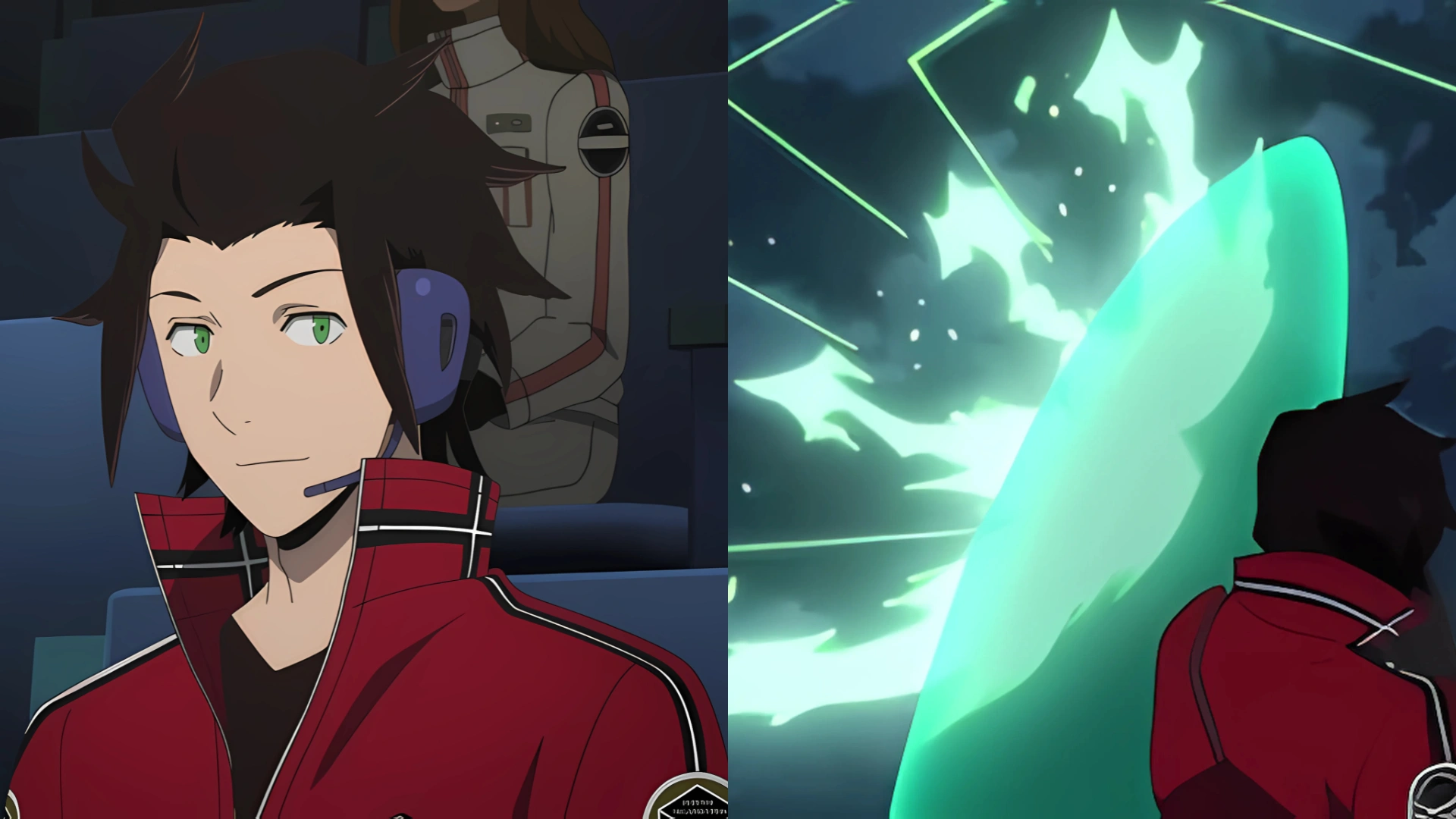
Balanced All-Rounders like Jun Arashiyama seamlessly transition between close-range swordplay and mid-range shooting, allowing them to adapt to changing combat situations without sacrificing effectiveness.
Among normal Trigger sets, the Balanced All-Rounder configuration reigns supreme in versatility. This loadout combines the strengths of Attacker and Shooter roles, allowing agents to effectively engage across multiple combat ranges and adapt to rapidly changing battle conditions.
The foundation of this setup typically includes a primary Attacker Trigger like Kogetsu or Raygust in the Main slot, paired with a Shooter Trigger such as Asteroid or Hound in the Sub slot. This combination enables the user to seamlessly transition between close-quarters combat and mid-range engagements depending on the situation and opponent.
Shield provides essential defense against both melee and ranged attacks, while Bagworm offers tactical flexibility through stealth capabilities—allowing for surprise attacks, strategic repositioning, and evasion when necessary. Some variations include Grasshopper for enhanced mobility or specialized Optional Triggers for unique tactical advantages.
What makes this configuration so versatile is its balanced approach to combat, exemplified by agents like Jun Arashiyama, whose fighting style embodies adaptability rather than specialization. The ability to effectively respond to various threats without being excessively vulnerable in any particular situation makes Balanced All-Rounders valuable assets on any mission.
The trade-off for this versatility is that All-Rounders typically cannot match the raw power of specialized roles in their respective domains—they won’t outshoot a dedicated Gunner or outfight a specialized Attacker. However, their adaptability across different combat scenarios offers a tactical advantage that often outweighs these limitations.
3. Skilled Viper Shooter
Core Components: Viper + Hound/Asteroid + Shield + Bagworm
Combat Range: Mid to Long-Range
Notable Users: Rei Nasu, Nozomi Kako

Skilled Viper users like Rei Nasu demonstrate exceptional versatility by programming complex bullet trajectories that can attack from unexpected angles, bypassing shields and cover that would stop conventional attacks.
The Skilled Viper Shooter configuration represents the height of versatility in ranged combat. This setup revolves around mastery of Viper, the programmable bullet Trigger that allows users to create complex trajectories for their trion bullets, effectively attacking from unexpected angles and bypassing conventional defenses.
What elevates this loadout in terms of versatility is its remarkable adaptability against different enemy types and combat scenarios. A skilled Viper user can program bullets to curve around shields, attack from multiple directions simultaneously, or create defensive patterns that make approaching them extremely difficult. This adaptability is further enhanced when paired with Hound for tracking elusive targets or Asteroid for raw firepower against stationary threats.
The defensive and tactical aspects of this configuration typically include Shield for protection and Bagworm for stealth, allowing these Shooters to control engagement distances and set up advantageous positions. Some variations include Lead Bullet for disabling opponents or Meteora for area denial, further expanding their tactical options.
Agents like Rei Nasu demonstrate how this configuration can dominate the battlefield through tactical flexibility rather than raw power. The primary limitation is the high skill ceiling—Viper’s versatility scales directly with the user’s experience, spatial awareness, and tactical creativity. This dependency on skill explains why Viper isn’t more widely used despite its potential versatility.
The Viper-centric approach offers exceptional versatility in combat ranges beyond close quarters, making it particularly effective in team compositions where Attackers can occupy enemies while Viper users exploit openings with their unpredictable bullet patterns.
4. Raygust All-Rounder
Core Components: Raygust + Thruster + Gunner Trigger + Shield
Combat Range: Close to Mid-Range
Notable Users: Osamu Mikumo (modified), Reiji Kizaki
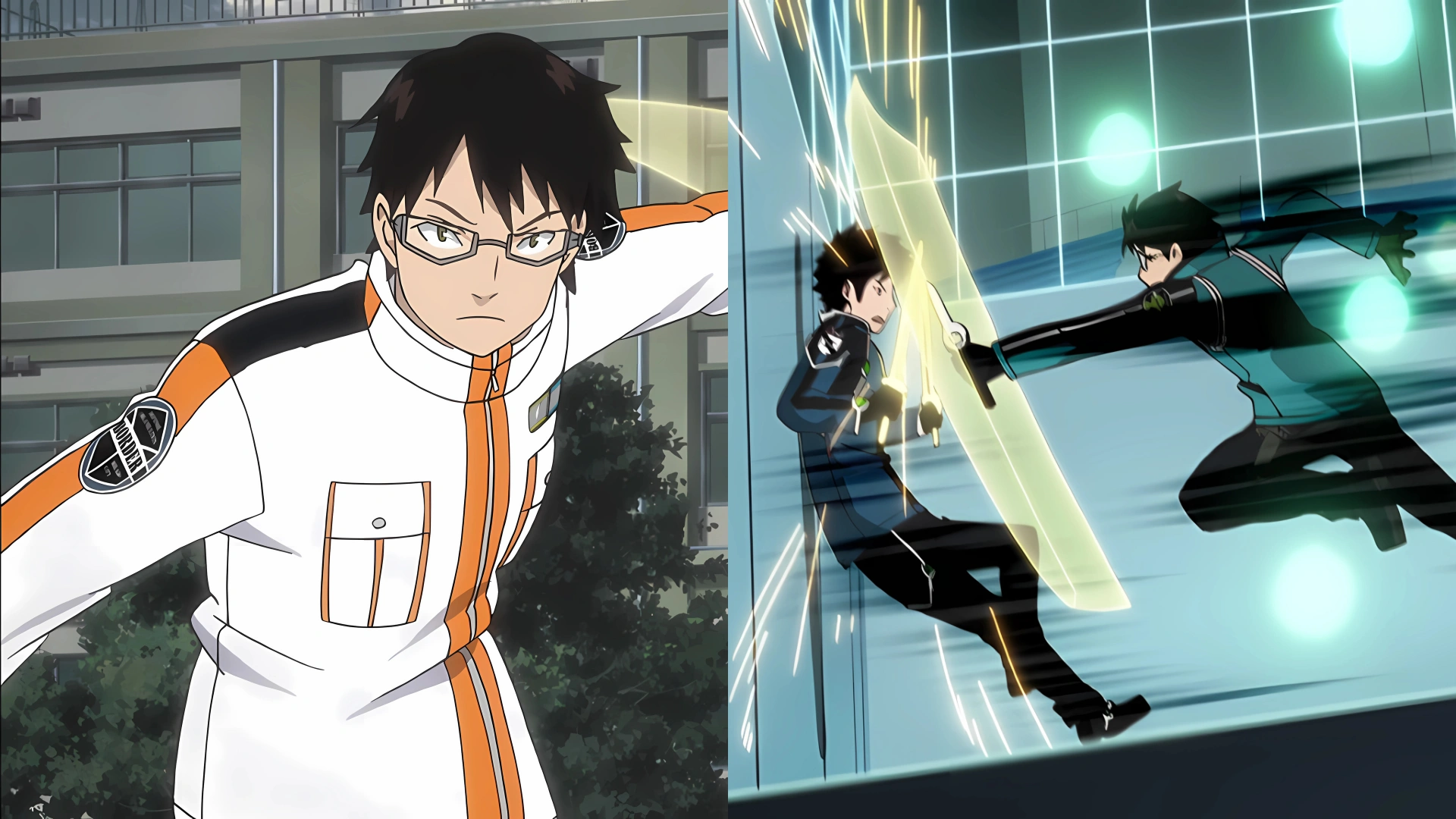
Raygust’s dual functionality as both offensive weapon and defensive shield, especially when enhanced with Thruster, creates a uniquely versatile foundation for an All-Rounder combat style.
The Raygust All-Rounder configuration offers unique versatility through its foundation in the Raygust Trigger—the only Attacker Trigger that functions as both an offensive weapon and a defensive shield. This dual nature creates an exceptionally adaptable base for a combat loadout.
In Blade Mode, Raygust functions as a powerful cutting weapon for close-range combat, while in Shield Mode, it provides superior protection compared to the standard Shield Trigger. What truly elevates this configuration’s versatility is the addition of Thruster, which enhances both mobility and attack power, allowing for rapid transitions between offense and defense.
The addition of a Gunner Trigger like Asteroid or Hound complements Raygust by providing mid-range capability, filling the gap in Raygust’s combat range. This creates a well-rounded fighter who can engage effectively at various distances and adapt to changing battle conditions on the fly.
While this configuration requires more trion than some alternatives due to Raygust’s consumption, it offers remarkable defensive capabilities without sacrificing offensive options. The ability to shield teammates, create defensive positions, and still maintain attack potential makes this setup particularly valuable in team operations.
Users like Reiji Kizaki demonstrate how this configuration can be leveraged for both individual combat effectiveness and team support roles. Even Osamu Mikumo, despite his low trion levels, utilizes a modified version of this setup to maximize his tactical utility through the versatile applications of Raygust’s dual modes.
5. Adaptable Scorpion Attacker
Core Components: Scorpion + Gunner Trigger + Shield + Bagworm
Combat Range: Close to Mid-Range
Notable Users: Yūko Kumagai, Yōsuke Yoneya (modified with spear)

Scorpion’s ability to manifest from any part of the user’s body in various shapes allows for creative and unpredictable attack patterns that adapt to different combat situations.
The Adaptable Scorpion Attacker configuration derives its versatility from the unique properties of the Scorpion Trigger—a lightweight, malleable blade that can be manifested from any part of the user’s body in various shapes and sizes. This inherent adaptability creates a foundation for creative and unpredictable close-range combat.
Unlike the more structured Kogetsu, Scorpion allows for rapid adjustment to combat flow, with users able to instantly create multiple blades, change their shape mid-combat, or manifest them from unexpected locations to catch opponents off-guard. This adaptability in close quarters is complemented by a Gunner Trigger in the Sub slot, typically Asteroid for reliable firepower or Hound for tracking mobile targets.
The defensive aspects of this configuration usually include Shield for protection against ranged attacks and Bagworm for stealth approaches, allowing these Attackers to control engagement timing and create advantageous situations. Some variations include Grasshopper for enhanced mobility, further expanding their tactical options and unpredictability.
What places this configuration slightly lower than the Raygust-centric All-Rounder is its more limited defensive capabilities. While Scorpion offers exceptional offensive adaptability, it lacks the robust defensive options of Raygust’s Shield Mode. However, the speed and creativity enabled by Scorpion often compensate for this limitation.
Agents like Yūko Kumagai demonstrate how this configuration can excel through tactical creativity rather than raw power, making it a highly adaptable option for those who prefer an aggressive yet flexible fighting style focused on close-range combat with mid-range support options.
6. Multi-Role Kogetsu User
Core Components: Kogetsu + Senku + Gunner Trigger + Shield/Grasshopper
Combat Range: Close to Mid-Range
Notable Users: Kei Tachikawa, Sōya Kazama
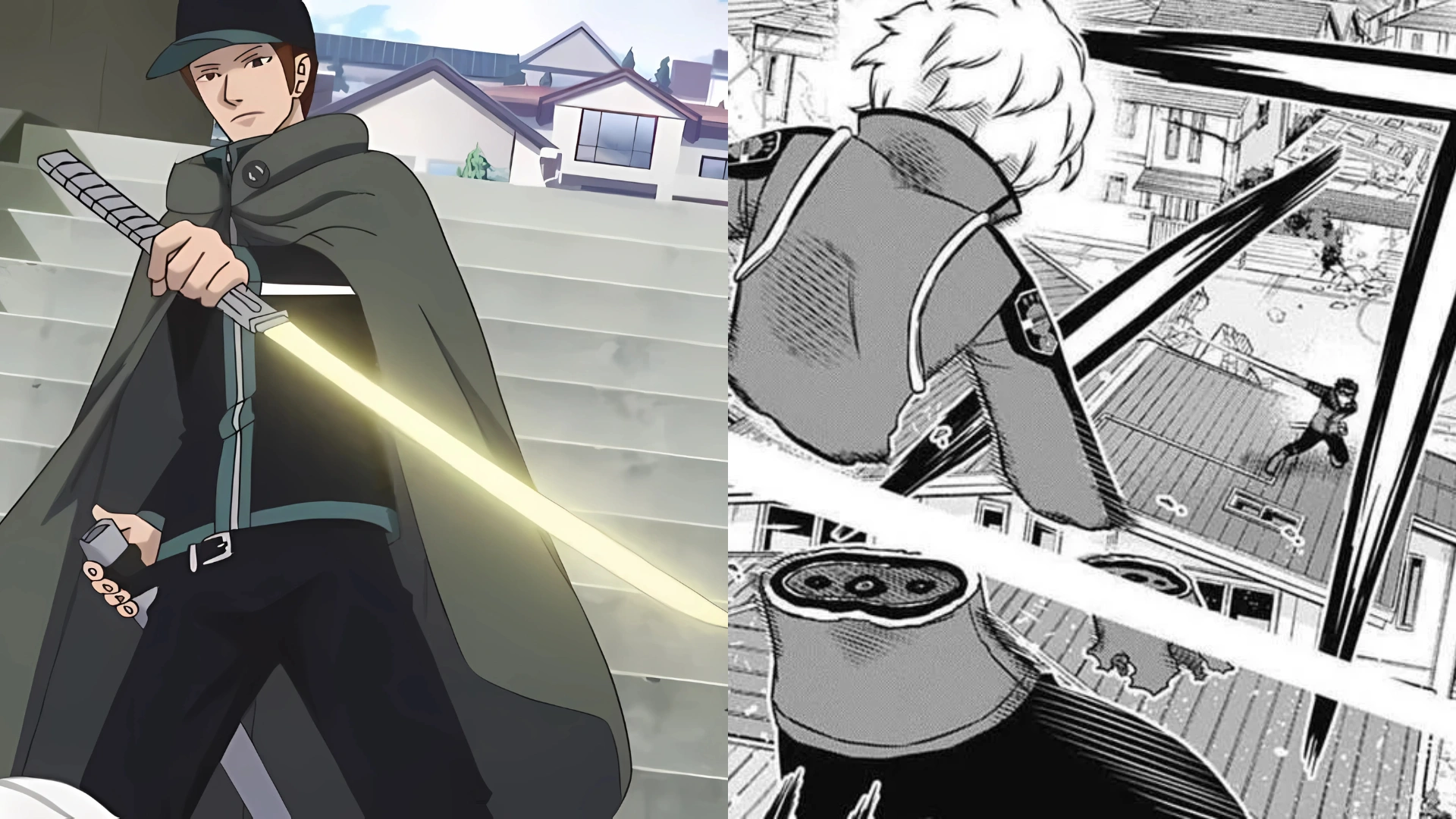
Kogetsu users with Senku can suddenly extend their attack range, while pairing with versatile Sub Triggers allows them to handle various combat scenarios despite their primary focus on swordsmanship.
The Multi-Role Kogetsu User configuration centers around Border’s standard-issue sword Trigger, which offers reliable cutting power and durability in close-range combat. What elevates this setup’s versatility is the combination of Kogetsu with carefully selected Sub and Optional Triggers that expand its tactical options.
Kogetsu’s balanced nature makes it a solid foundation for versatility. When paired with Senku, it gains the ability to launch blade beams that extend its reach to mid-range, partially compensating for its close-range focus. The addition of a Gunner Trigger like Asteroid for direct firepower or Hound for tracking mobile targets further enhances its range versatility.
Defensive and mobility options typically include Shield for protection and Grasshopper for enhanced movement, allowing these agents to quickly close distances, create unexpected attack angles, or retreat when necessary. Some variations include specialized Kogetsu forms like Spear for extended reach or Gen’yo for shape alteration.
What places this configuration lower than Scorpion-centric setups is its somewhat more limited adaptability in close quarters. Kogetsu cannot be manifested from multiple body parts or rapidly change shape like Scorpion, making it slightly less flexible in dynamic close-range engagements. However, it compensates with greater cutting power and the extended range provided by Senku.
Agents like Kei Tachikawa demonstrate how this configuration can achieve remarkable versatility through mastery of fundamentals rather than exotic techniques. The combination of reliable close-range combat capability with supplementary mid-range options creates a well-rounded fighter who can adapt to various combat situations.
7. Strategic Trapper
Core Components: Switchbox/Spider + Attacker/Gunner Trigger + Chameleon
Combat Range: Variable (Battlefield Control)
Notable Users: Shinji Fuyushima, Osamu Mikumo (Spider)

Strategic Trappers reshape the battlefield itself, using Spider wires and Switchbox teleportation points to control enemy movement and create advantageous situations for both themselves and teammates.
The Strategic Trapper configuration offers a different form of versatility focused on battlefield control rather than direct combat. This setup revolves around specialized Triggers like Switchbox for teleportation traps or Spider for wire-based impediments, allowing users to manipulate the battlefield to their advantage.
What makes this approach versatile is its ability to adapt the environment to different tactical needs. Switchbox allows for the creation of teleportation portals that can be used offensively to launch surprise attacks, defensively for rapid escapes, or strategically to reposition teammates. Spider creates wire networks that can trip opponents, restrict movement, or create defensive barriers.
The configuration typically includes Chameleon for stealth, allowing for undetected trap setup, and is often supplemented by an Attacker Trigger like Scorpion for close-range defense or a Gunner Trigger for ranged engagement. Some variations include Meteora for creating area-denial zones or Lead Bullet for immobilizing opponents caught in traps.
This setup demonstrates its versatility not through direct combat power but through tactical flexibility and battlefield manipulation. It excels in team operations where the Trapper can create advantageous situations for more combat-focused teammates, but can also function effectively in solo operations through careful preparation and trap coordination.
Agents like Shinji Fuyushima show how this seemingly support-focused configuration can actually control the flow of battle, forcing opponents to react to the battlefield conditions rather than set the terms of engagement themselves. This indirect approach to combat versatility represents a unique tactical niche in Border’s defense strategy.
8. Reliable Egret Sniper
Core Components: Egret + Lead Bullet + Shield + Bagworm
Combat Range: Long-Range
Notable Users: Tōru Narasaka, Ren Tsukimi
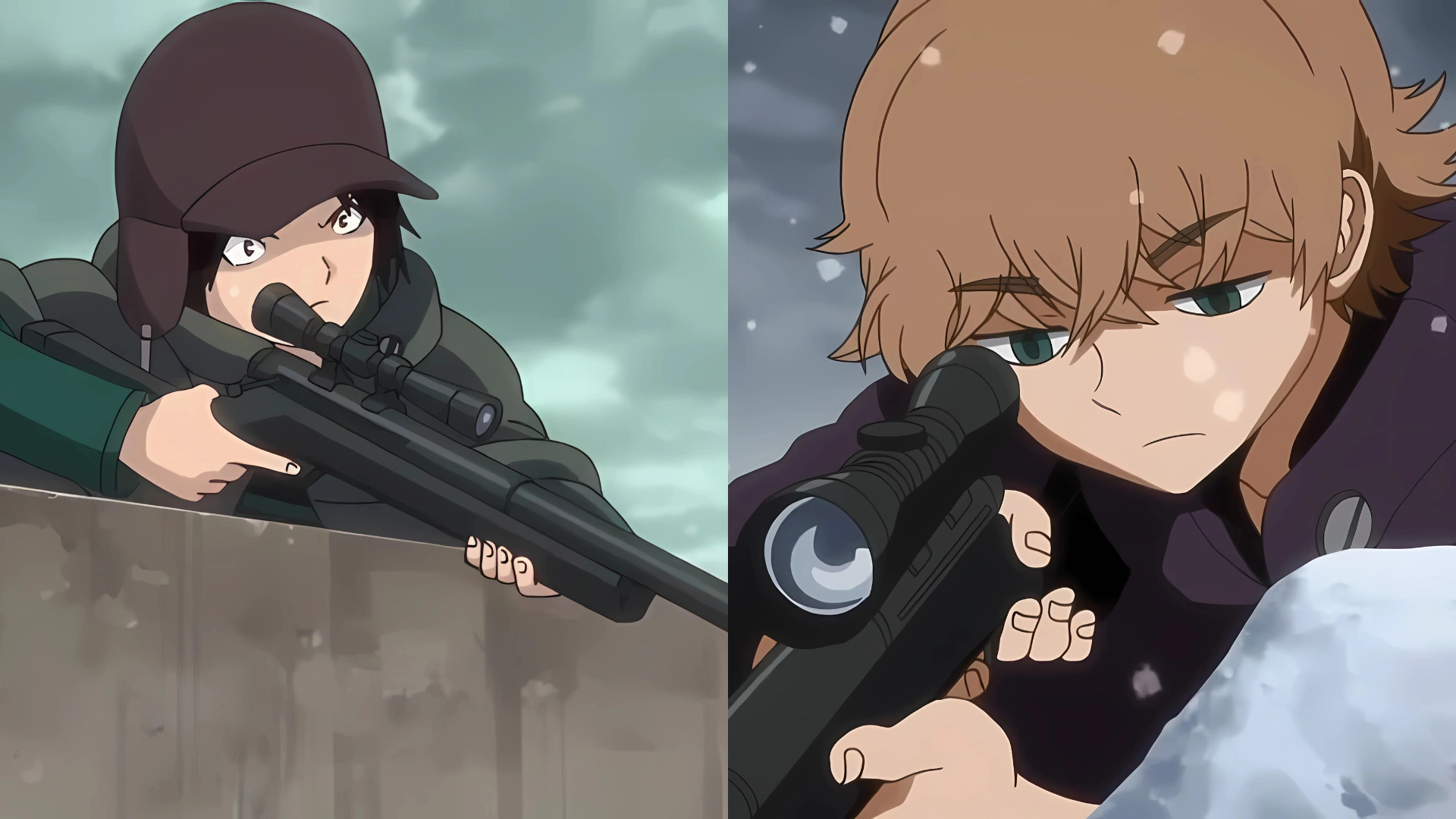
Egret Snipers balance power and firing speed, offering more versatility than other sniper configurations through their ability to effectively engage various target types at long range.
The Reliable Egret Sniper configuration represents the most versatile approach within the specialized field of long-range combat. Centered around Egret, Border’s balanced sniper Trigger that offers a good compromise between power and firing speed, this setup provides adaptability within the constraints of the Sniper role.
What grants this configuration its versatility is Egret’s balanced performance characteristics, allowing it to effectively engage various target types at long range. Unlike Ibis, which specializes in power at the cost of speed, or Lightning, which prioritizes rapid fire over stopping power, Egret provides a flexible foundation for different sniping scenarios.
The addition of Lead Bullet significantly enhances this versatility by allowing the Sniper to immobilize or slow targets rather than just damage them, creating tactical opportunities for teammates. Shield provides essential defense against counter-sniping attempts, while Bagworm enables concealed positioning and relocation, crucial aspects of effective sniping.
While inherently limited by its long-range focus, this configuration maximizes versatility within that constraint through its balanced approach and tactical options. Egret Snipers can adapt to different target priorities, effectively engaging both high-value, heavily-defended targets and multiple lighter targets as the situation demands.
Agents like Tōru Narasaka demonstrate how this configuration can support various mission objectives through adaptive long-range engagement, from elimination and suppression to tactical support through well-placed Lead Bullet shots. This balanced approach to sniping earns it the highest placement among sniper configurations in terms of overall versatility.
9. Powerful Ibis Sniper
Core Components: Ibis + Shield + Bagworm + Optional Support Trigger
Combat Range: Long-Range
Notable Users: Isami Tōma, Ken Satori

Ibis Snipers sacrifice versatility for raw firepower, specializing in eliminating high-priority targets with shots powerful enough to penetrate multiple shields.
The Powerful Ibis Sniper configuration prioritizes maximum firepower in the sniper role, centered around Ibis—the highest-impact sniper Trigger in Border’s arsenal. While less versatile than Egret-based setups, this configuration offers specialized versatility in handling high-priority or heavily defended targets.
Ibis’s primary advantage is its overwhelming stopping power, capable of penetrating multiple shields or eliminating heavily armored opponents with a single shot. This specialized capability gives Ibis users a unique role in team compositions, focusing on neutralizing the most dangerous threats or breaking through defensive positions that other agents cannot penetrate.
The supporting Triggers in this configuration typically include Shield for protection against counter-sniping and Bagworm for concealed positioning—crucial for Ibis users due to their slower firing rate making repositioning after shots particularly important. Some variations include specialized Optional Triggers for enhanced situational awareness or additional defensive capabilities.
What places this configuration lower in versatility than Egret-based setups is its limited effectiveness against multiple or highly mobile targets. The slower firing rate of Ibis makes it less adaptable to rapidly changing battlefield conditions, restricting its versatility to specific tactical scenarios where its overwhelming power is most valuable.
Agents like Isami Tōma demonstrate how this configuration can excel in its specialized role, providing crucial breakthrough capability against high-value targets. Despite its more limited overall versatility, the Ibis Sniper configuration fulfills an essential tactical niche that can be decisive in appropriate combat situations.
10. Rapid Lightning Sniper
Core Components: Lightning + Shield + Bagworm + Support Trigger
Combat Range: Long-Range
Notable Users: Yuzuru Ema, Chika Amatori (modified)
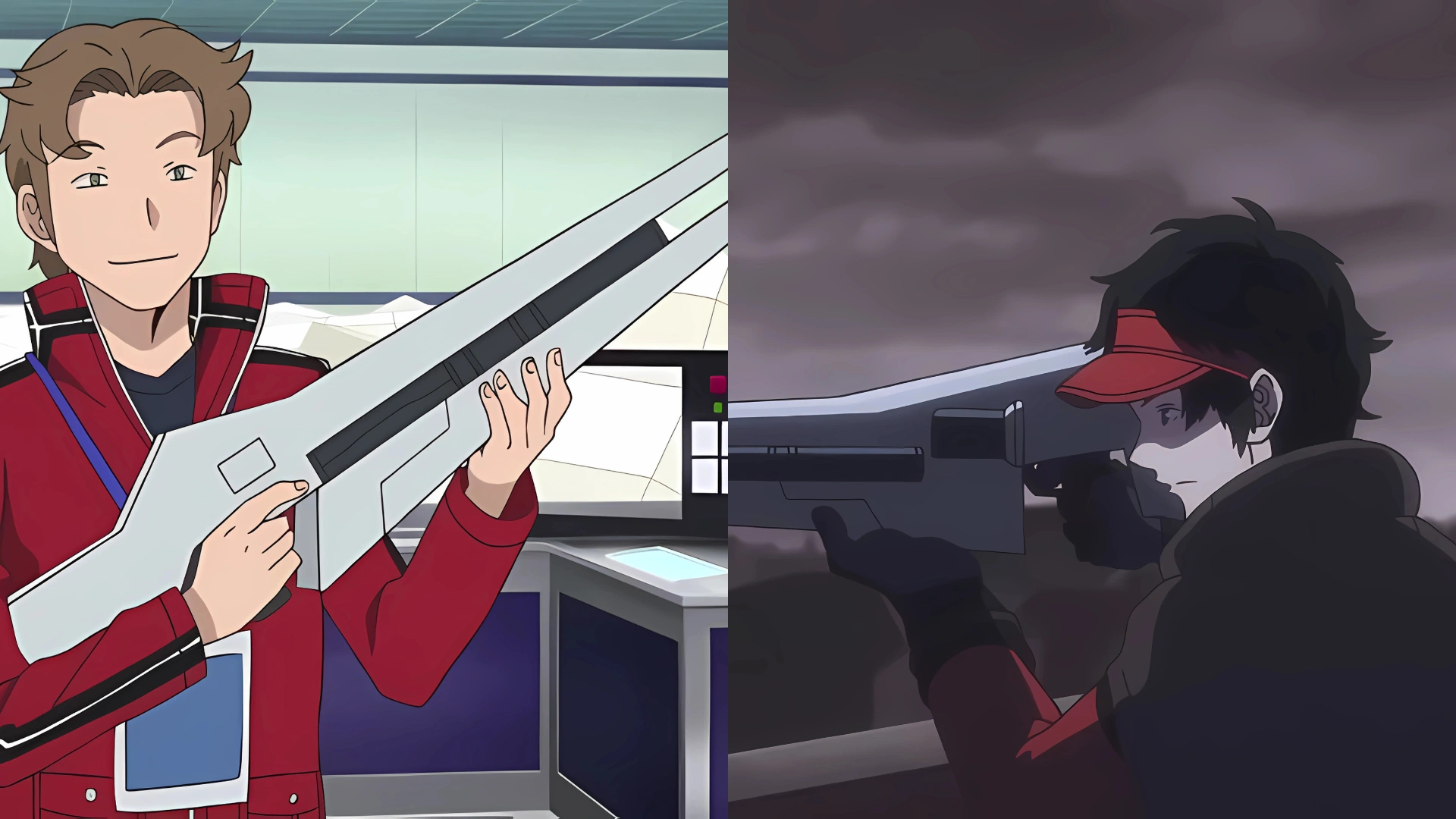
Lightning Snipers trade power for speed, offering versatility through rapid fire that can pressure multiple targets and disrupt enemy formations more effectively than other sniper configurations.
The Rapid Lightning Sniper configuration represents a specialized approach to long-range combat focused on speed and suppression rather than raw power. Built around Lightning, Border’s fastest-firing sniper Trigger, this setup trades impact force for rate of fire and accuracy.
The versatility of this configuration stems from Lightning’s rapid fire capability, allowing users to engage multiple targets in quick succession or maintain pressure on mobile opponents. This makes Lightning users particularly effective against agile targets that might evade slower sniper Triggers, and valuable for disrupting enemy formations or forcing defensive responses.
Like other sniper setups, this configuration typically includes Shield for protection and Bagworm for stealth positioning. Some variations incorporate Lead Bullet to compensate for Lightning’s lower stopping power by adding immobilizing effects, or specialized Optional Triggers for enhanced awareness and positioning.
What places this configuration lower in overall versatility than other sniper setups is its limited effectiveness against heavily armored or shielded targets. The lower power per shot of Lightning makes it less adaptable to situations requiring breakthrough capability, restricting its versatility to scenarios where rapid fire is more valuable than high impact.
Agents like Yuzuru Ema show how this configuration can excel in its specialized role, providing consistent pressure and disruption from long range. Despite its more focused approach to sniping, the Lightning configuration offers a unique tactical option that complements other combat roles in Border’s defense strategy.
11. Asteroid-Focused Gunner
Core Components: Asteroid + Shield + Bagworm
Combat Range: Mid-Range
Notable Users: Various C-Rank agents
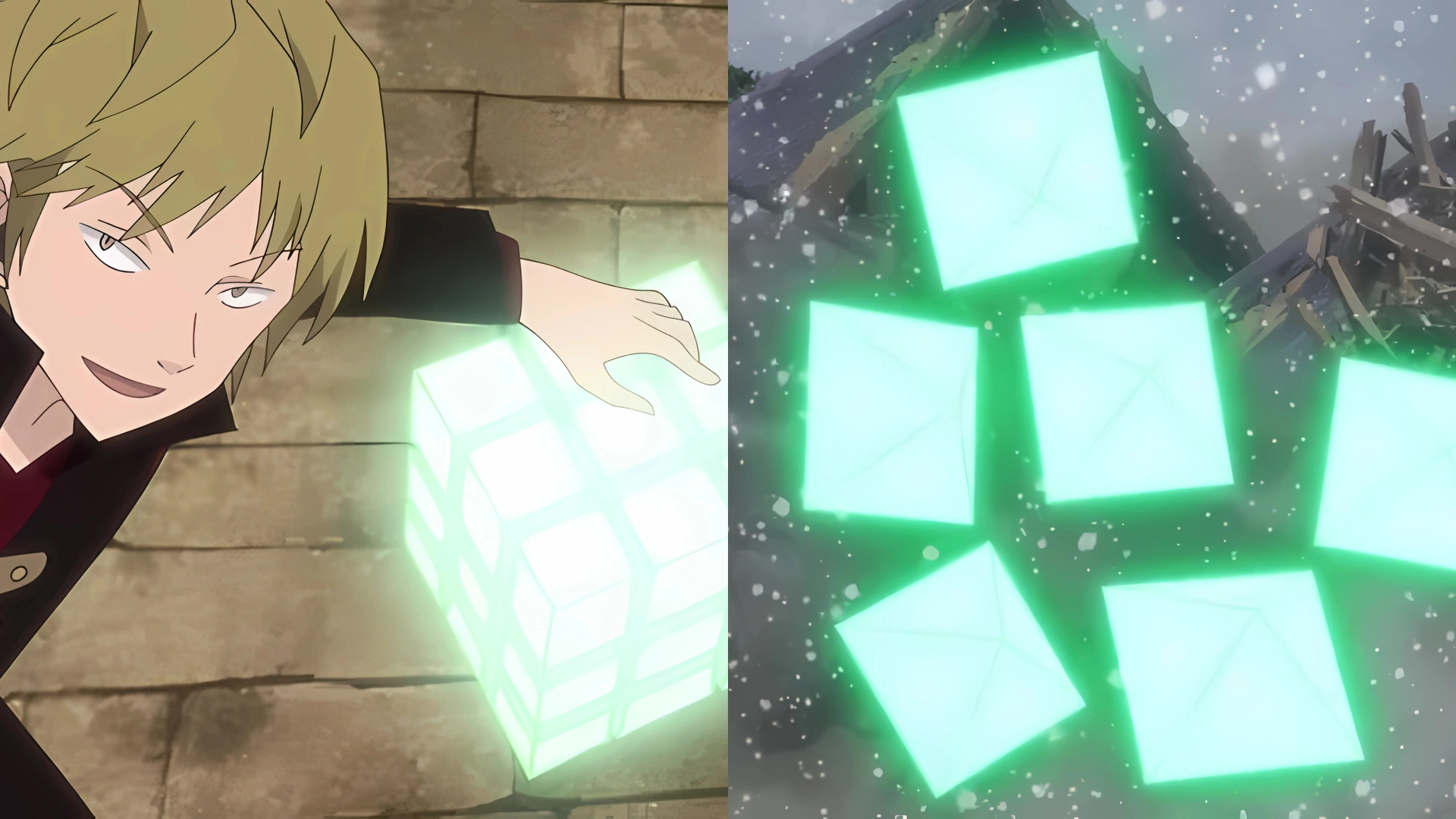
Asteroid-Focused Gunners rely primarily on straightforward firepower, lacking the tactical flexibility of more advanced Shooter configurations that incorporate tracking or maneuvering bullets.
The Asteroid-Focused Gunner configuration represents one of the more limited approaches to versatility in Border’s Trigger system. Centered around Asteroid, the standard-issue bullet Trigger that offers straightforward firepower, this setup prioritizes reliability and simplicity over tactical flexibility.
Unlike more versatile Shooter configurations that incorporate tracking bullets (Hound) or programmable trajectories (Viper), the Asteroid-focused approach relies primarily on direct fire, making it less adaptable to different combat scenarios. Without supplementary bullet types, these Gunners have fewer options for engaging evasive targets or bypassing defensive positions.
The supporting Triggers in this configuration typically include Shield for defense and Bagworm for stealth, providing some tactical options but insufficient to overcome the limitations of relying heavily on a single bullet type. Some variations include Meteora for limited area effect or composite bullets combining multiple Asteroid shots (Gimlet) for increased penetration.
What places this configuration so low in terms of versatility is its predictable attack patterns and limited strategic options. Without the ability to track, curve bullets, or create complex attack angles, Asteroid-focused Gunners struggle to adapt to opponents who can shield effectively or move unpredictably.
This configuration is common among C-Rank agents and those new to Gunner roles, serving as a foundation for developing more versatile approaches as users gain experience and access to additional Triggers. While effective in straightforward combat scenarios, its lack of adaptability to diverse tactical situations limits its overall versatility significantly.
12. Single-Minded Attacker
Core Components: Kogetsu/Scorpion + Shield
Combat Range: Close-Range Only
Notable Users: Low-ranked or inexperienced agents

Single-Minded Attackers who rely solely on close-range weapons without supplementary mid-range options represent the least versatile approach to Border’s combat system.
The Single-Minded Attacker configuration represents the lowest level of versatility in Border’s combat system. This approach focuses almost exclusively on close-range engagement through Attacker Triggers like Kogetsu or Scorpion, with minimal supplementary options for addressing other combat scenarios.
The fundamental limitation of this configuration is its restricted combat range, leaving users highly vulnerable to mid and long-range attacks with few effective counters. Without a Gunner Trigger in the Sub slot, these Attackers have no significant offensive options beyond melee range, making them easily outmaneuvered by opponents who can maintain distance.
While Shield provides some defense against ranged attacks, the lack of tactical diversity severely limits adaptability to changing battlefield conditions. Without Optional Triggers like Grasshopper for mobility or specialized Sub Triggers for range extension, these Attackers struggle to create engagement opportunities against opponents who don’t wish to fight in close quarters.
This configuration is typically seen among inexperienced agents who haven’t yet developed a more balanced approach to combat, or in specialized training scenarios focused exclusively on close-range technique development. In actual combat operations, the extreme vulnerability to being outranged makes this setup impractical for most mission types.
The Single-Minded Attacker approach serves as a baseline against which more versatile configurations can be measured, highlighting how crucial adaptability across different ranges and tactical scenarios is to effective combat performance in Border’s defense system.
World Trigger Combat System FAQ
What's the difference between Attackers, Shooters, and Gunners in Border?
In Border’s combat system, these roles represent different specializations with distinct Trigger types and fighting styles. Attackers focus on close-range combat using blade-type Triggers like Kogetsu, Scorpion, and Raygust, emphasizing melee techniques and direct engagement. Gunners utilize firearm-shaped Triggers like Asteroid, Hound, Viper, and Meteora, focusing on mid-range combat with precise, controlled shooting. Shooters use the same bullet Triggers as Gunners but without gun-shaped manifestations, instead forming and controlling bullets directly with their hands, allowing for more complex and customizable attack patterns but requiring greater skill and trion control. All-Rounders combine elements from multiple roles, typically pairing Attacker and Gunner/Shooter Triggers to achieve versatility across different ranges, while Snipers specialize in long-range combat using rifle-type Triggers like Egret, Ibis, and Lightning. Each role has distinct advantages and limitations, with effectiveness heavily dependent on both the agent’s natural aptitude and their chosen Trigger configuration.
How do Black Triggers differ from normal Triggers?
Black Triggers represent a fundamentally different category of combat technology in World Trigger, created through the self-sacrifice of exceptionally skilled Trigger users rather than standard manufacturing. This creation process imprints the creator’s dying wishes and fighting style into the Trigger, resulting in unique abilities that often far exceed normal Triggers in power and versatility. Unlike standard Triggers that follow consistent rules and limitations, each Black Trigger possesses entirely unique capabilities based on its creator, ranging from Yūma’s multiple combat Seals to Fujin’s omnidirectional wind blades. Black Triggers typically don’t require the Main/Sub Trigger configuration of normal Trigger sets, instead offering multiple abilities within a single integrated system. They also tend to demonstrate significantly higher trion efficiency and output compared to normal Triggers. Due to their exceptional power and scarcity, Black Triggers are considered national treasures, with nations sometimes willing to go to war over their possession. Only a handful of Black Triggers exist in the series, each representing a singular combat capability that cannot be replicated through conventional Border technology.
What makes Tamakoma Branch's Triggers different from standard Border Triggers?
Tamakoma Branch’s unique Triggers incorporate Neighbor technology that isn’t available in standard Border equipment, resulting in enhanced capabilities and specialized functions. Tamakoma-1 members utilize exclusive Optional Triggers like Full Arms, which allows for the simultaneous use of multiple Gunner Triggers; Geist, which enhances reaction speed and physical capabilities; and Connector, which facilitates coordinated attacks between team members. These specialized Triggers are possible because Tamakoma operates under slightly different regulations than Border’s main branch, allowing them to utilize Neighbor technology more extensively. This technological difference reflects Tamakoma’s philosophy of seeking understanding and potential alliance with Neighbors rather than purely defensive isolation. The enhanced capabilities of these Triggers give Tamakoma agents significant tactical advantages, particularly in situations requiring adaptability across different combat scenarios. While these custom Triggers are not widely available, they represent some of the most versatile combat options in the World Trigger universe, demonstrating how Neighbor technology integration can expand Border’s combat capabilities beyond conventional limitations.
How does trion level affect an agent's Trigger versatility?
An agent’s trion level significantly impacts the versatility of their Trigger set in multiple ways. Higher trion capacity allows agents to sustain more complex and trion-intensive Trigger combinations for longer periods, directly enhancing their tactical flexibility in extended engagements. Agents with abundant trion can afford to equip and frequently use high-consumption Triggers like Meteora for area effects or Raygust with Thruster for enhanced mobility and attack power, options that might be impractical for low-trion users. This resource advantage enables high-trion agents to maintain multiple active Triggers simultaneously without worrying about rapid depletion, allowing for more dynamic combinations of offense, defense, and mobility. For example, Kei Tachikawa’s high trion level enables him to effectively utilize Kogetsu with Senku for extended periods while still having resources for Shield and other supporting Triggers. Conversely, agents with lower trion like Osamu Mikumo must carefully manage their limited resources, often focusing on efficiency and strategic application rather than power or sustained use. This limitation forces low-trion users to develop more creative approaches, sometimes leading to unexpected tactical innovations, but ultimately restricts the range of viable Trigger combinations they can effectively deploy in combat situations.
What factors should be considered when designing a versatile Trigger set?
Designing a versatile Trigger set requires careful consideration of multiple factors to ensure effectiveness across various combat scenarios. First, combat range coverage is essential—ideally including options for close, mid, and potentially long-range engagement to adapt to different opponents and battlefield conditions. Balance between offensive and defensive capabilities ensures you can both attack effectively and protect yourself, with most versatile sets including at least one dedicated defensive option like Shield. Trion efficiency must match the user’s capacity, as even the most theoretically versatile set becomes impractical if it depletes trion too quickly for the specific agent. The user’s natural aptitude and fighting style should align with their Triggers, as versatility emerges from skillful application rather than just equipment selection. Special consideration should be given to mobility options like Grasshopper or Teleporter that enhance both offensive and defensive capabilities by enabling better positioning. Stealth options such as Bagworm provide tactical flexibility for approach and withdrawal. Finally, the set should offer counters to common threat types, including methods to deal with both heavily shielded opponents and highly mobile adversaries. The most versatile configurations often sacrifice some degree of specialization to gain broader applicability, finding a balance between focused excellence in one area and adequate performance across many scenarios.
